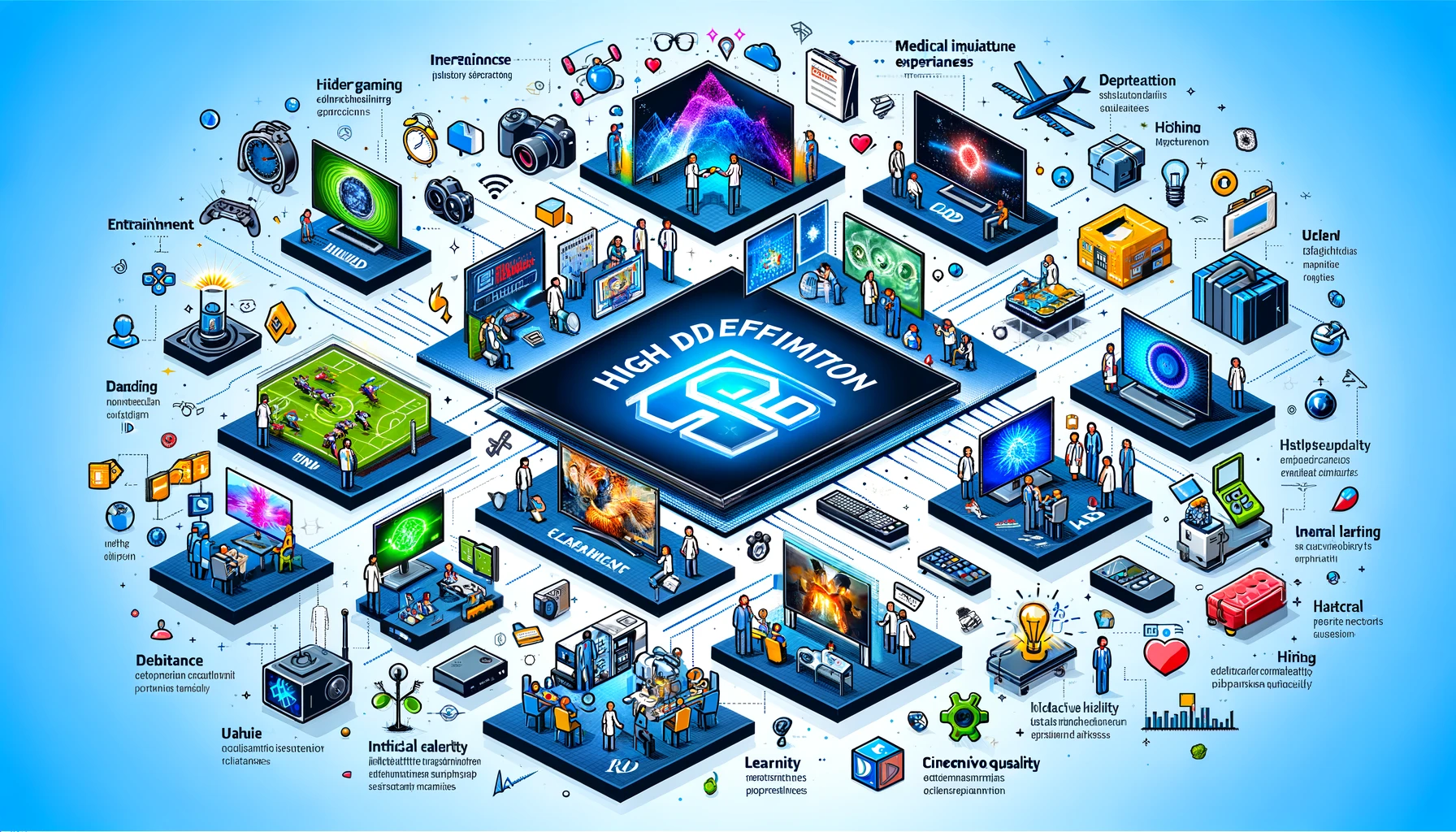Explore the transformative journey of LCD technology as it embraces high definition, offering unprecedented clarity, vibrant colors, and energy efficiency. Dive into the innovations that revolutionized displays.
In the ever-evolving world of display technology, the transition to high definition (HD) in
Liquid Crystal Display (LCD) screens marks a pivotal moment in how we experience digital visuals. This technological leap has not only redefined the quality of images and videos but has also set new standards for device design, energy efficiency, and user experience. The advancement of HD in LCD technology is a testament to decades of innovation, research, and a relentless pursuit of excellence in the field of display technology. In this comprehensive exploration, we delve into the origins, development, and future of HD in LCD technology, unveiling how it has transformed the digital landscape.

The Genesis of LCD Technology
The journey of LCD technology began in the 1960s, rooted in the quest for lightweight, compact, and energy-efficient display solutions. Early LCD screens were limited by low contrast ratios, slow response times, and monochromatic outputs. However, the potential for low power consumption and slim profiles propelled further research and development.
Breakthroughs in High Definition
The transition to HD was a game-changer for LCD technology. High Definition LCDs, with their ability to display at least 720 lines of resolution, offered a quantum leap in picture quality. This was a significant upgrade from the standard definition (SD), which maxed out at a mere 480 lines. The introduction of Full HD (1080p) and subsequently 4K UHD in LCD screens has since elevated visual experiences to unprecedented levels, offering clarity and detail that were once the sole domain of high-end televisions and professional monitors.
Technological Innovations Behind LCD HD

Several key innovations have been instrumental in the advancement of HD in LCD technology:
IPS Panels: In-Plane Switching (IPS) technology brought about wide viewing angles and better color reproduction, essential for HD displays.
LED Backlighting: The shift from CCFL (Cold Cathode Fluorescent Lamps) to LED (Light Emitting Diodes) backlighting enhanced color accuracy, contrast ratios, and energy efficiency.
High Refresh Rates and Response Times: Improvements in refresh rates and response times reduced motion blur and ghosting, critical for high-definition video and gaming.
Quantum Dots: Quantum dot technology has allowed for a wider color gamut and richer color accuracy, pushing the boundaries of HD LCD displays.
Impact on Industries and Consumers
The impact of HD in LCD technology extends far beyond just improved picture quality. It has revolutionized multiple industries, including entertainment, gaming, healthcare, and education, by providing tools that offer more immersive experiences and enhanced information delivery. For consumers, the leap to HD has transformed the user experience, offering lifelike visuals that captivate and engage, whether it's in the realm of television, smartphones, tablets, or laptops.
Environmental Considerations and Energy Efficiency

One of the unsung benefits of the advancement in LCD HD technology is its contribution to energy efficiency and environmental sustainability. LED backlighting not only improves picture quality but also consumes significantly less power than its predecessors. This reduction in energy consumption contributes to lower electricity bills for consumers and a smaller carbon footprint for the planet.
The Future of LCD HD Technology
As we look to the future, the evolution of LCD HD technology continues at an impressive pace. Emerging technologies like OLED (Organic Light Emitting Diodes) and MicroLED offer glimpses into the future, with promises of even higher resolutions, better energy efficiency, and more flexible displays. However, LCD technology is not standing still; advancements in materials science and manufacturing processes continue to push the limits of what's possible in HD displays.

Conclusion
The advancement of high definition in LCD technology is a remarkable journey of innovation, overcoming numerous technical challenges to deliver the crystal-clear, energy-efficient, and vibrant displays we enjoy today. As we continue to push the boundaries of what is possible with display technology, the legacy of HD in LCDs serves as a foundation for future innovations. The transformative impact of this technology on entertainment, communication, and information delivery underscores its significance in the digital age, heralding a future where the quality and accessibility of visual information continue to reach new heights.
This exploration into the advancement of HD in LCD technology highlights not only the technological achievements but also the broader implications for society and the environment. As we embrace the future, the continued evolution of display technologies promises to further enrich our digital experiences, driving forward the endless pursuit of perfection in the realm of visual display.



